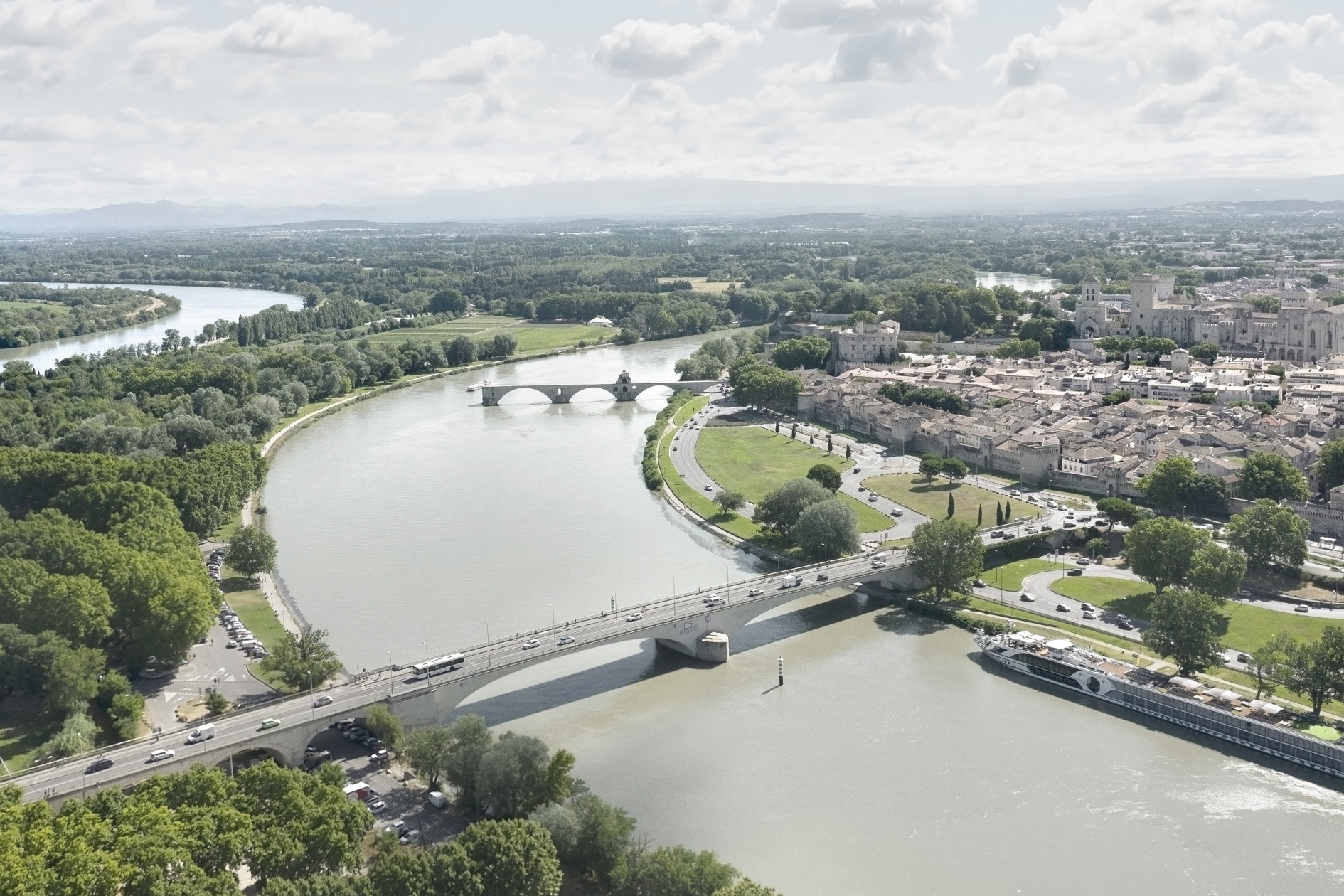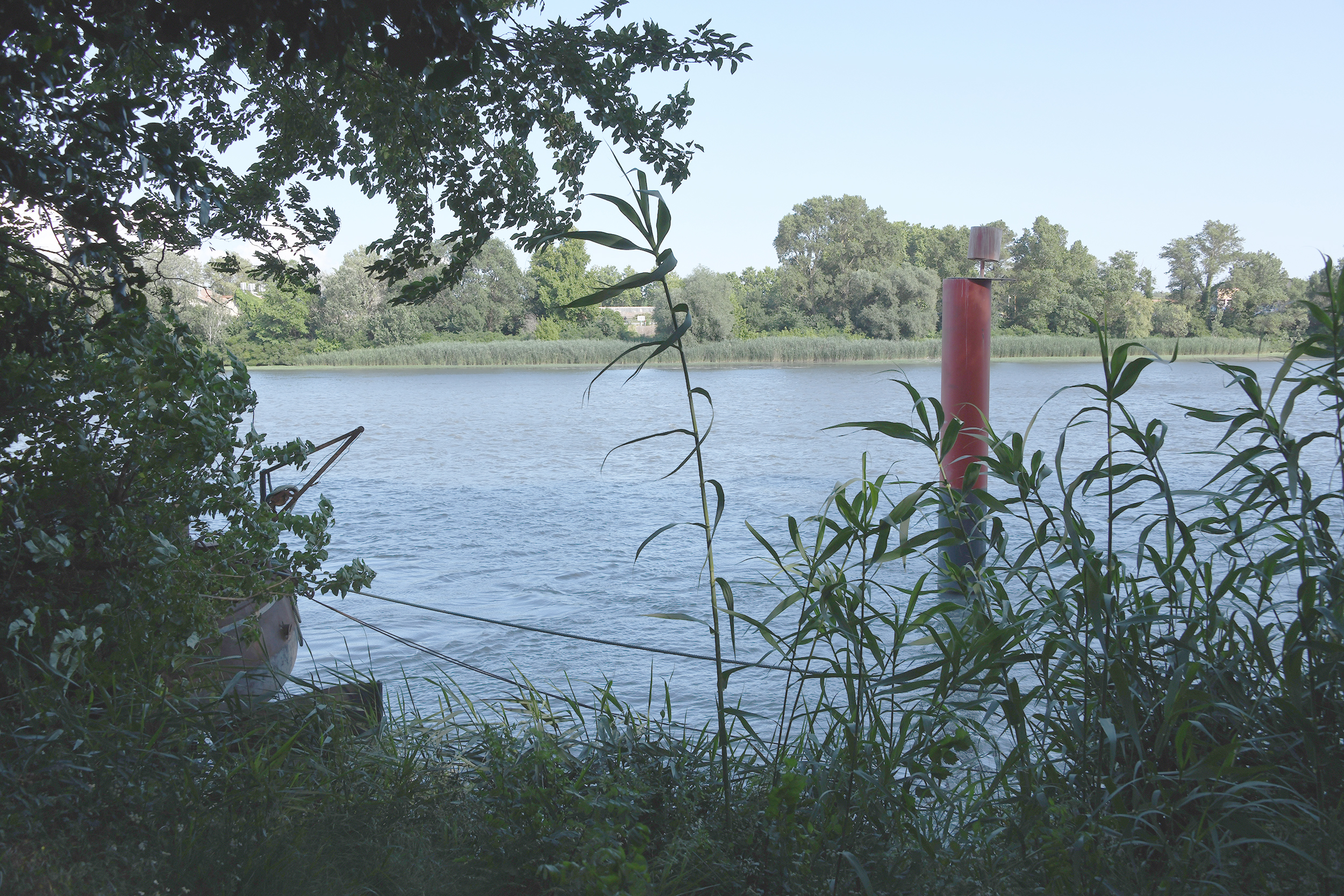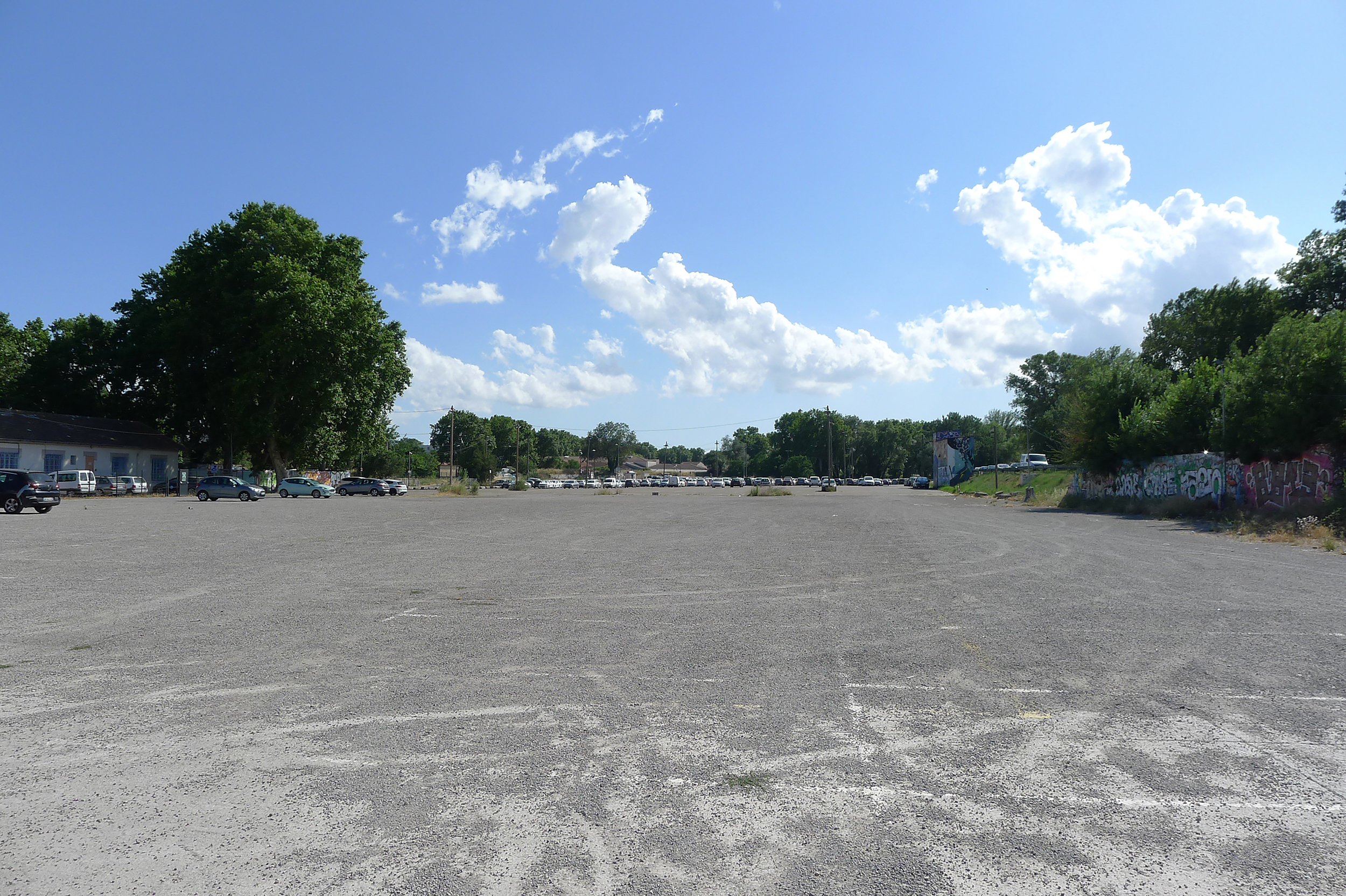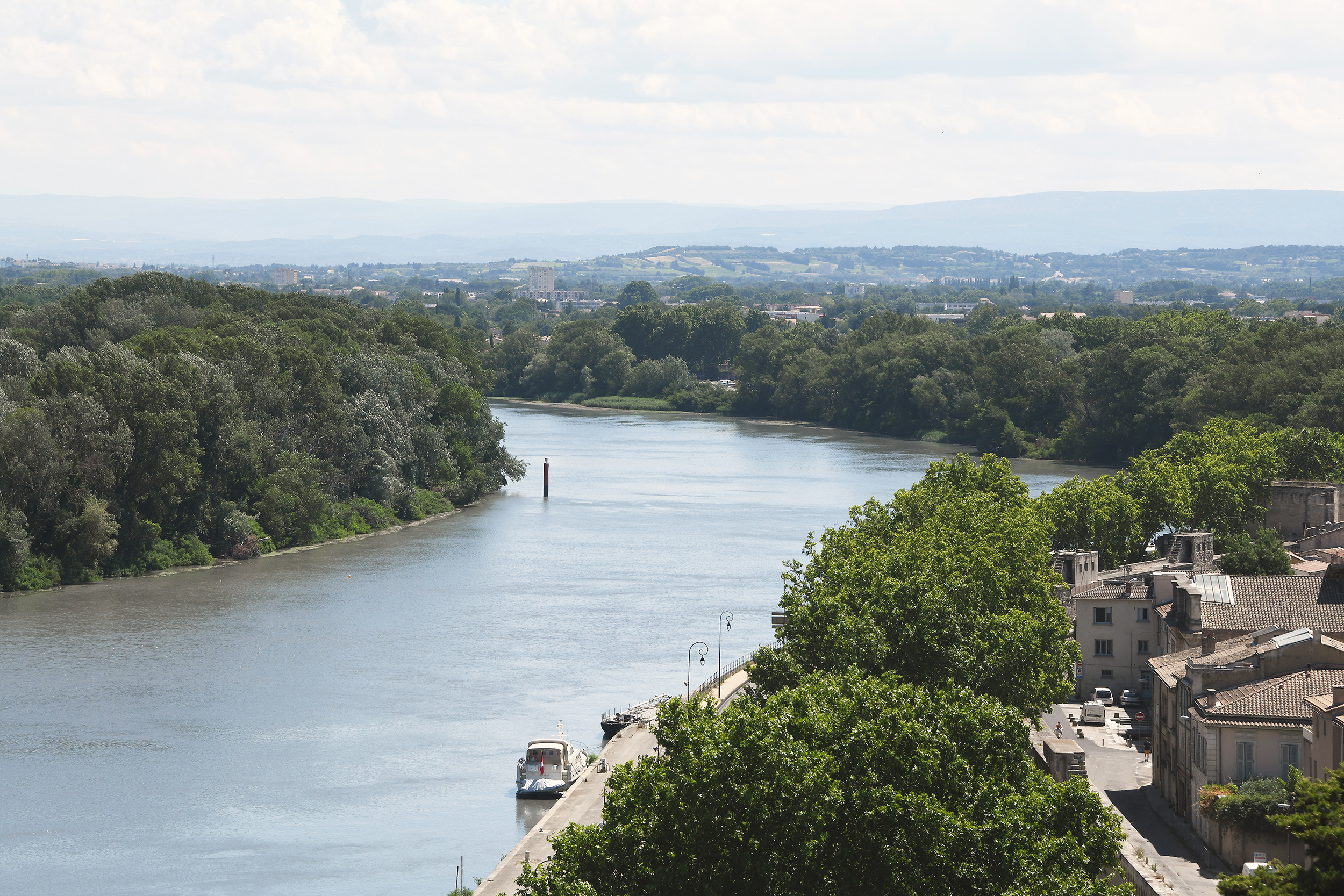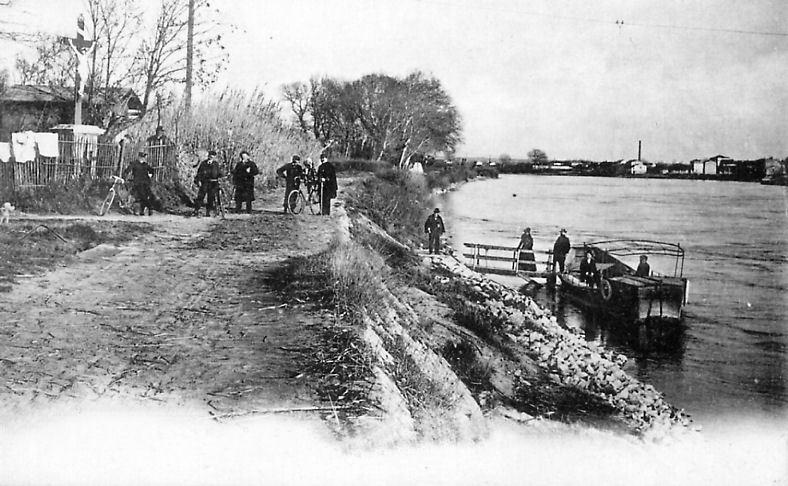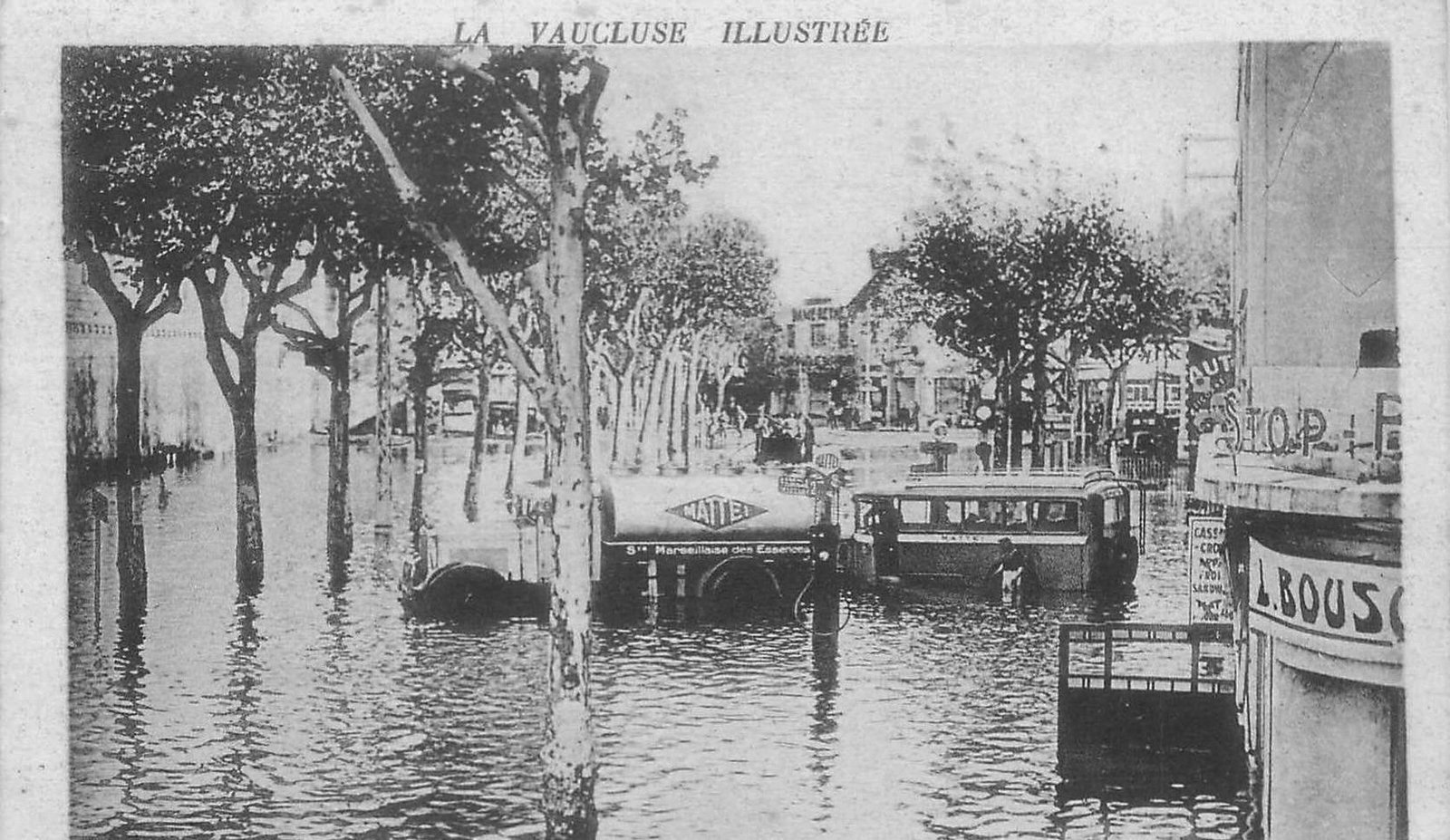Avignon
The 11-hectare site, mainly housing a 1,600-space park-and-ride facility, is located northeast of the city center of Avignon, on the left bank of the Rhône. A stone's throw from the ramparts of the Cité des Papes, this sector constitutes a particularly strategic space for imagining new links between the city and its river. Simultaneously characterized by strong constraints and genuine landscape qualities, the site has the potential to be transformed in a perspective of significant development of sustainable mobility and the public transport network, especially through the implementation of a new streetcar line and a river shuttle, the reinforcement of bus lines, and the creation of park-and-ride facilities in the periphery. In the context of the energy transition, the research aims to explore through the architectural project the multiple challenges and potentialities of the site reconversion into a mixed-use neighborhood. At the programmatic level, the visions are based on the prospective principle of a certain mix of housing and activities, with increased attention paid to the issue of housing in an urban environment. The process includes relevant reflections on the creation of a cultural center dedicated to the performing arts - which is part of the dynamics of the famous Festival d’Avignon and the action plan "Avignon, Terre de culture 2025" - as well as the development of a network of public spaces considering the unique characteristics of the site.

